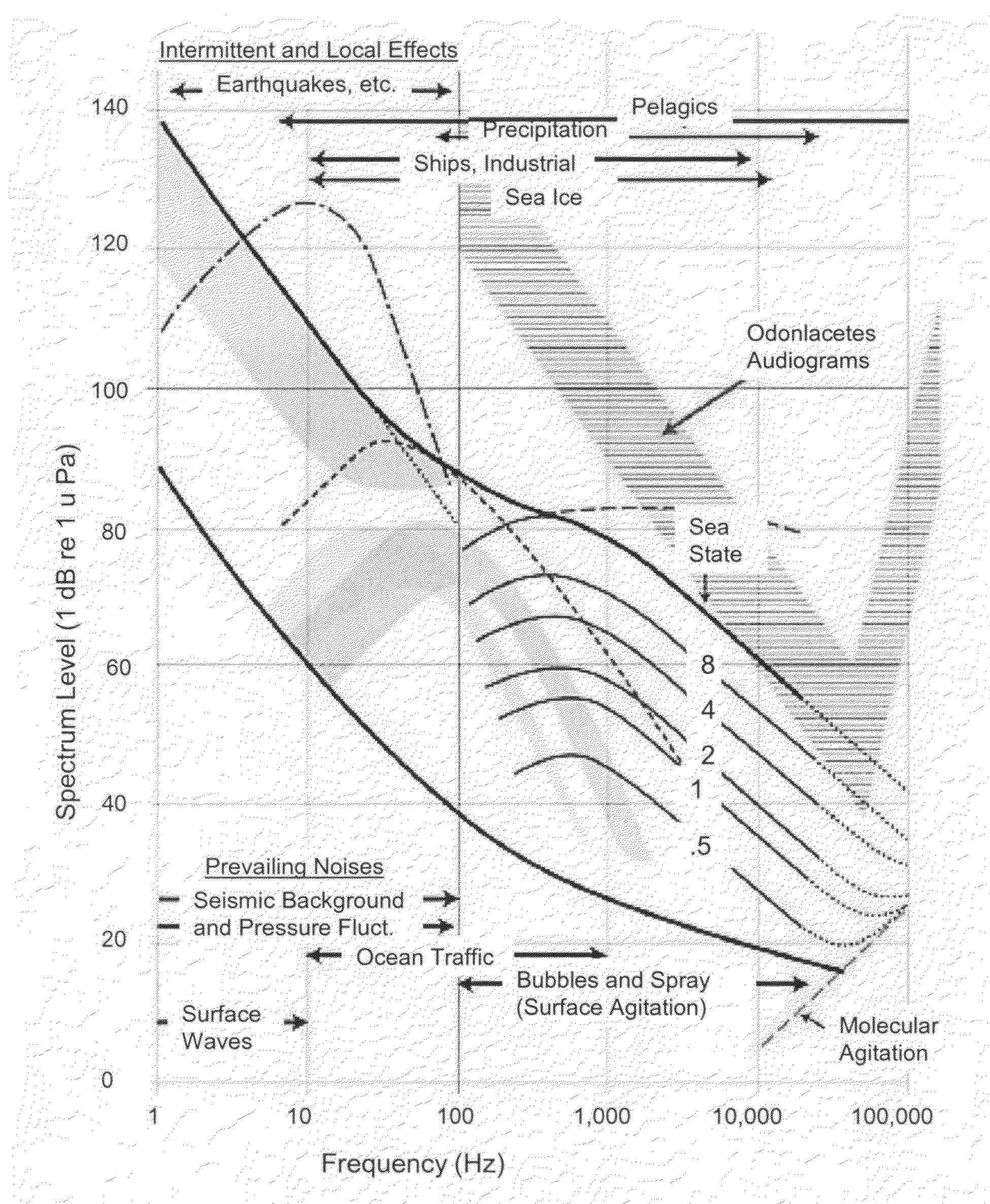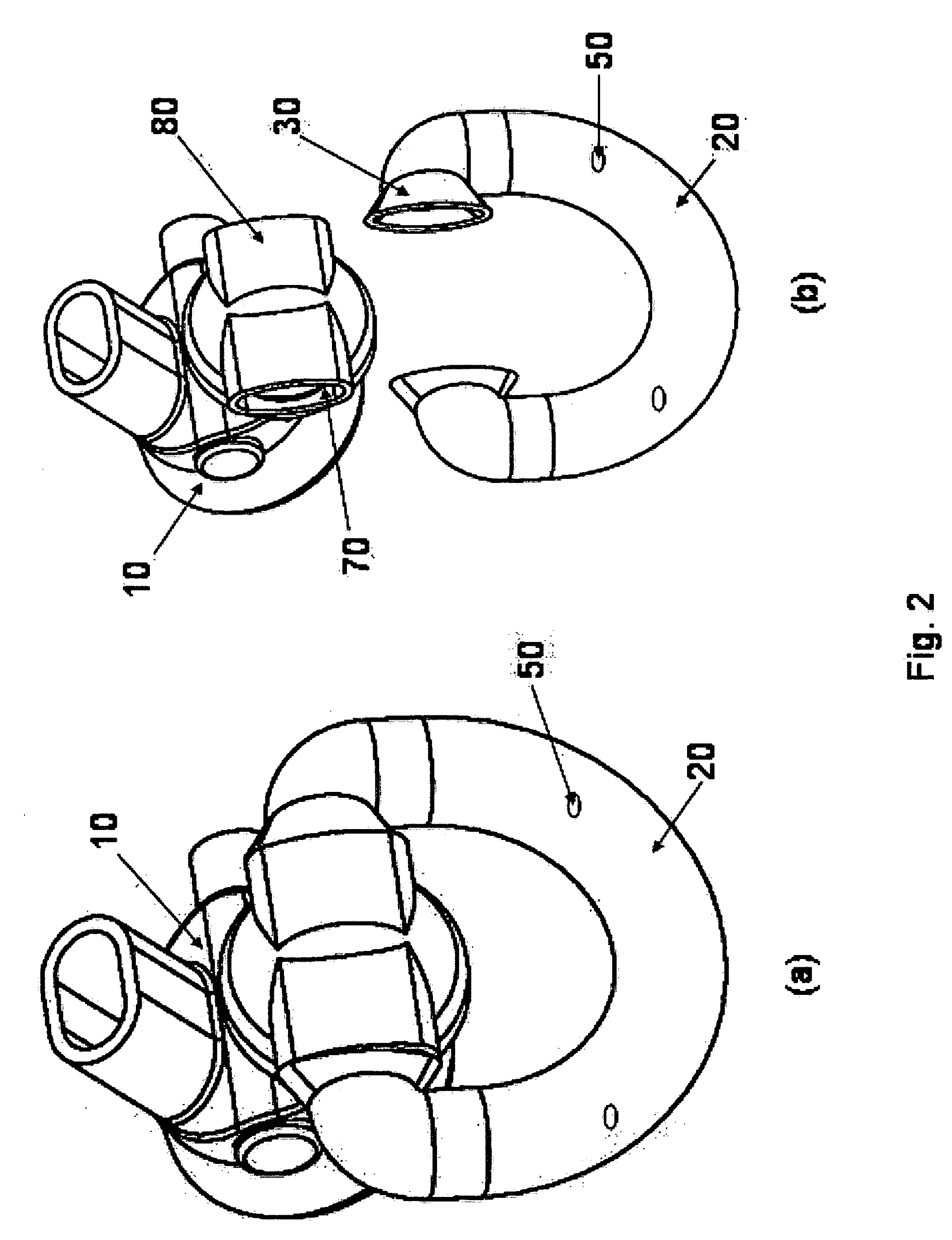Method and apparatus for altering and/or minimizing underwater noise
a technology of underwater noise and equipment, applied in underwater equipment, instruments, machines/engines, etc., can solve the problems of generating substantial noise and causing the startle response of fish
- Summary
- Abstract
- Description
- Claims
- Application Information
AI Technical Summary
Benefits of technology
Problems solved by technology
Method used
Image
Examples
example 1
[0127]A conventional bubble diverter of the second stage of a Mares brand regulator was removed and replaced with a sealing cup of the invention which formed a tight fit around the exhalation port of the second stage. The sealing cup was glued into place with an acrylic glue and sealed using conventional silicone. A plastic tube having an approximate length of about three feet was connected to the sealing cup which in turn was connected to a frequency adjustor manifold. All leaks were sealed with silicone. The plastic tube was then connected to the second stage regulator hose using zip ties. The manifold, having an internal check valve, was then attached to the first stage by using a screw and o-ring to secure the manifold via a low pressure port on the manifold. A frequency adjustor made from Porex, having an average porosity of about 100 microns, a length of about seven inches, a wall thickness of about 0.2 inches and a central bore having a length of about 6.5 inches and a centra...
example 2
[0128]Both sides of a bubble diverter of the second stage of a Mares brand regulator were connected to a frequency adjustor made from Porex, having an average porosity of about 100 microns, a length of about 5.0 inches, a wall thickness of about 0.2 inches and a central bore having a length of about 5.0 inches and a central bore diameter of about 0.8 inches. The connection was made by forming a soft plastic drysuit wrist seal around a side of a bubble diverter and then gluing the other side to the frequency adjustor. The same was performed on the other side of the bubble diverter. Once sealed, exhaled air was forced through the frequency adjustor to check for leaks, which were sealed using conventional silicone. The first stage was then coupled to a scuba tank which contained air at a pressure of about 3000 psi.
example 3
[0129]A videographer and two divers, the first (diver 1) using the regulator system described in Example 1 and the second (diver 2) using the regulator system described in Example 2, entered the water at the Turtle Farm Reef on Grand Cayman. At thirty feet, each diver began to use the frequency adjustors. The frequency adjustor of diver 1 initially failed to function properly and it was discovered that the frequency adjustor was over tightened within the manifold and thereby prevented the check valve from operating properly. At about thirty feet of sea water, the frequency adjustor was loosened slightly and the system began to function normally.
[0130]Periodically divers 1 and 2 would switch between conventional regulators and the frequency adjustors. It was observed that approach distances (i.e., the distance a diver can approach a fish before the fish exhibits a startle response and / or swims away) were 40% to 50% shorter when then the frequency adjustor was used. In one instance, d...
PUM
 Login to View More
Login to View More Abstract
Description
Claims
Application Information
 Login to View More
Login to View More - R&D
- Intellectual Property
- Life Sciences
- Materials
- Tech Scout
- Unparalleled Data Quality
- Higher Quality Content
- 60% Fewer Hallucinations
Browse by: Latest US Patents, China's latest patents, Technical Efficacy Thesaurus, Application Domain, Technology Topic, Popular Technical Reports.
© 2025 PatSnap. All rights reserved.Legal|Privacy policy|Modern Slavery Act Transparency Statement|Sitemap|About US| Contact US: help@patsnap.com



